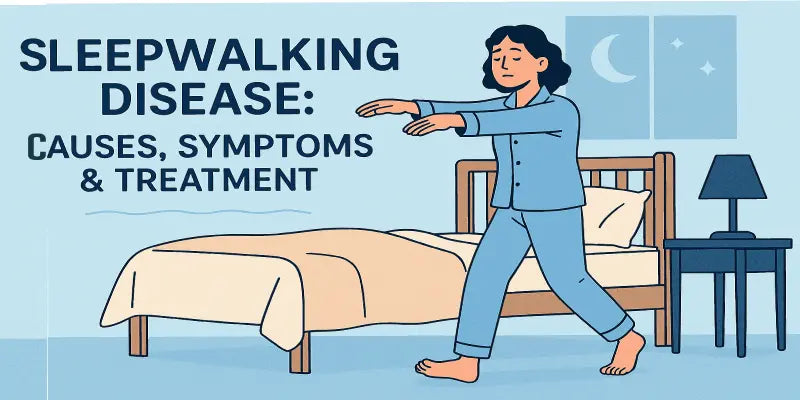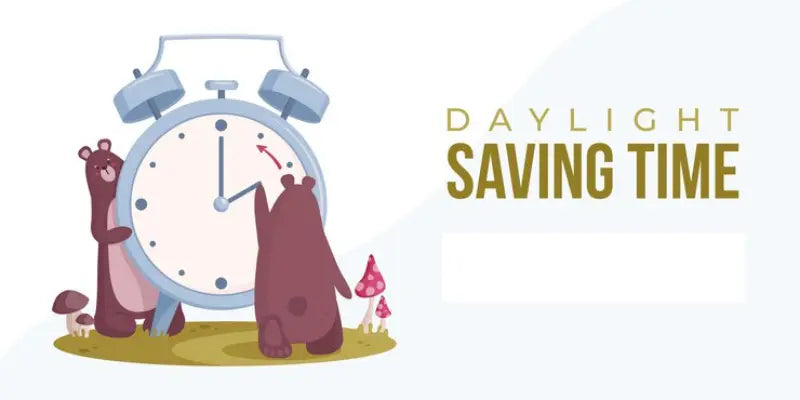
Narcolepsy: Symptoms, Diagnosis, and Management
A common misconception about narcolepsy is that it is a sleep condition. It is defined by serious and persistent drowsiness, which can interfere with performance in school, work, and social settings, as well as increase the likelihood of major accidents and injuries.
Narcolepsy affects hundreds of thousands of people, including adults and children, despite being uncommon in comparison to many other sleep disorders. In this blog, we'll look at the various types of narcolepsy and how the narcolepsy symptoms, causes, diagnosis, and treatment can help people manage it more effectively.
What is Narcolepsy?
Narcolepsy is a neurological illness that impairs your capacity to wake and sleep. People suffering from narcolepsy have extreme, uncontrollable daytime sleepiness. They can fall asleep unexpectedly while engaged in any activity.
In a typical sleep cycle, we begin in the early stages of sleep, then progress to the deeper stages, and lastly to rapid eye movement (REM) sleep (after around 90 minutes). People with narcolepsy enter REM sleep almost immediately during the sleep cycle, and occasionally even when awake.
Types of Narcolepsy
Narcolepsy is categorized into two types:
Type 1 is the most common. It includes a symptom known as cataplexy, or an abrupt loss of muscle tone. People with this type of narcolepsy have excessive tiredness and cataplexy during the day as a result of low levels of a protein known as hypocretin in the brain. (Hypocretin is also known as orexin.)
Type 2 is narcolepsy without cataplexy. Typically, patients with type 2 narcolepsy have normal levels of hypocretin.
Narcolepsy Symptoms
Narcolepsy symptoms usually start slowly over a few months and remain for the rest of your life. Most of the time, excessive daytime sleepiness (EDS) is the first warning sign of narcolepsy. In general, EDS makes it difficult to carry out daily activities, even if you get enough sleep at night. Lack of energy might make it difficult to concentrate. You experience memory lapses and feel despair or fatigue. Other symptoms might be:
- Cataplexy: Cataplexy refers to a sudden and brief decrease in muscular tone. It can range from drooping eyelids (known as partial cataplexy) to full-body collapse. Cataplexy can be triggered by laughing or powerful emotions like excitement or terror. Its frequency varies from person to person. It can happen numerous times per day.
- Disrupted Sleep at Night: People who have narcolepsy frequently experience sleep fragmentation, which causes them to wake up several times at night. Other challenging problems with sleep, such as excessive bodily movements and sleep apnea, are more common among narcoleptics.
- Sleep Paralysis: It is the inability to move or speak when falling asleep or waking up. Episodes can last a few seconds or several minutes. After the occurrence, both persons will regain their full ability to move and communicate.
- Hallucinations: These are typically vivid and scary, and they can occur at any time. They are mostly visual, but other senses can be engaged. Hypnagogic hallucinations are those that occur while you fall asleep. Hypnopompic hallucinations are those that occur as you wake up.
- Automatic Movements: People with narcolepsy frequently fall asleep yet continue to move certain portions of their body, such as their hands.
Treatments for Narcolepsy
Narcolepsy often doesn't become worse with time for a lot of people. Certain symptoms may improve over time, and in rare situations, symptom remission may occur spontaneously. There is no cure for narcolepsy type 1 or 2. The goals of narcolepsy treatment are to alleviate symptoms, lower risks, and improve quality of life.
- Medication Management: Certain symptoms of narcolepsy can be targeted by prescription drugs, such as stimulants for excessive daytime sleepiness or antidepressants for cataplexy, sleep paralysis, and hallucinations. Sodium oxybate, widely known as Xyrem, has been demonstrated to effectively cure daytime drowsiness and cataplexy while also increasing overall sleep quality.
- Cognitive Behavioral Therapy (CBT): CBT techniques can help people with narcolepsy in changing their sleep-related thoughts, beliefs, and actions, resulting in improved sleep hygiene and coping mechanisms.
- Lifestyle Changes: Developing good sleep hygiene habits, sticking to a consistent sleep schedule, and avoiding excessive coffee and alcohol consumption can all help to improve sleep quality and overall well-being.
- Supportive Strategies: Regular exercise, stress management, and seeking help from healthcare professionals, support groups, or counseling services can help people deal with the issues of narcolepsy.
- Monitoring and Modifying Treatment: Narcolepsy management is a continuous process that may call for readjusting treatment regimens on a regular basis. Regular follow-up meetings with a sleep specialist are essential for monitoring symptoms, assessing therapy success, and making any required changes.
How to Manage Narcolepsy
- Take regular naps throughout the day. Short naps are rejuvenating for persons with narcolepsy, thus scheduling naps during the day can help minimize EDS.
- Good sleep practices can help persons with narcolepsy overcome inadequate nighttime sleep. A consistent sleep schedule, a distraction-free sleeping environment, and limited usage of electronic devices before bedtime are all examples of good sleep hygiene.
- Avoid alcohol and other sedatives because any substance that causes sleepiness may exacerbate daytime narcolepsy symptoms.
- People who have narcolepsy should consult with their doctor regarding safe driving. To improve safety, consider resting before driving and avoiding long drives.
- People with narcolepsy are more likely to be obese, thus exercise and a healthy diet are essential for their general health.
Conclusion
Narcolepsy can make daily life difficult. Experiencing extreme sleepiness can be stressful. You may damage yourself or others during an incident.
However, it is entirely possible to successfully manage the condition. You can maintain your health by receiving a proper diagnosis, working with your doctor to identify the best treatment for you, and sticking to your treatment plan.
To manage narcolepsy, it's important to get enough sleep. One way to do this at night is to try using a bamboo pillow. Bamboo pillows have many health advantages that can help enhance sleep quality and alleviate other health issues. Bamboo pillows can help enhance your lifestyle by providing an eco-friendly alternative to traditional pillows.








